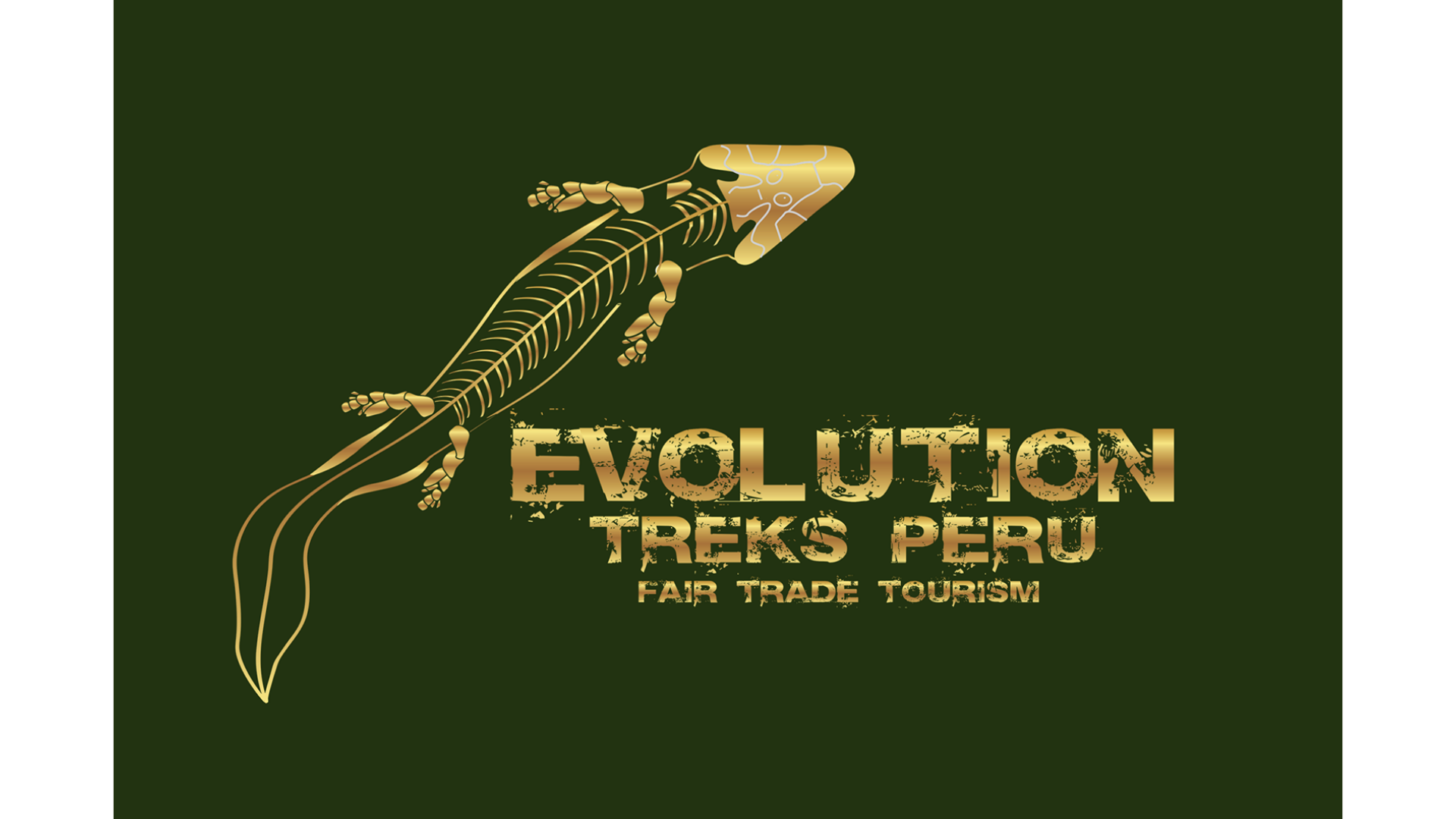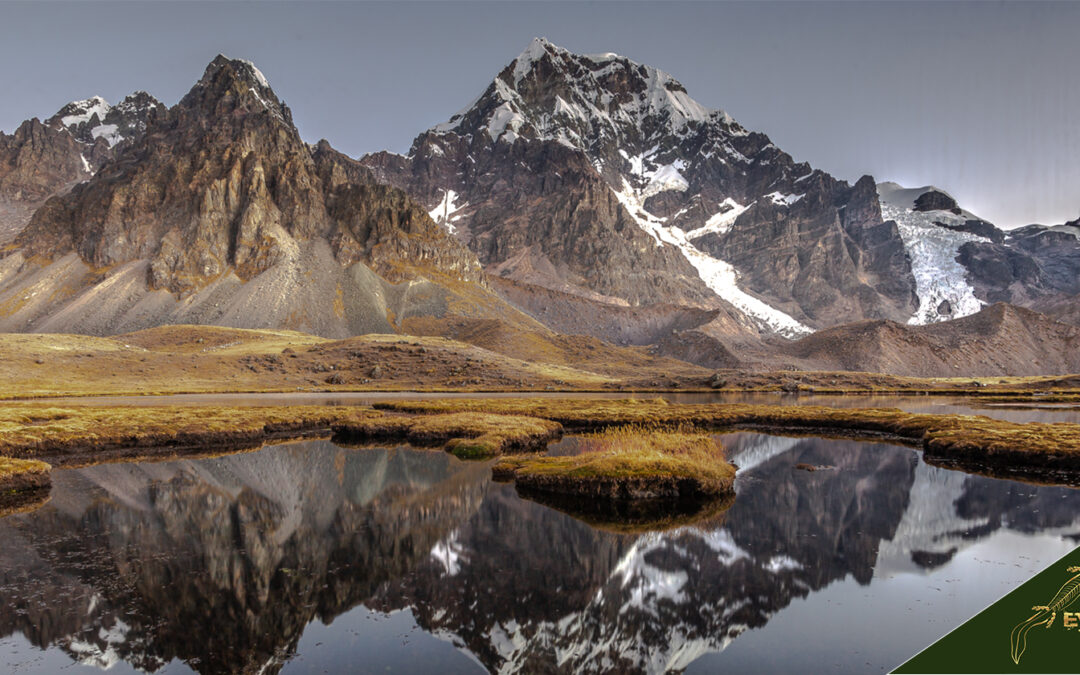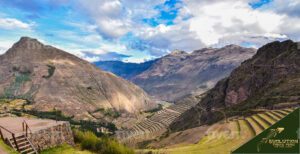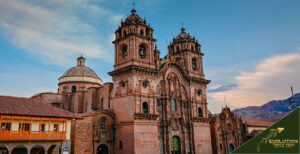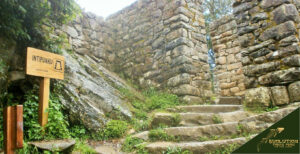Nevado Auzangate is a gigantic and dark mountain of the Vilcanota Mountain range situated in the Andes in Cusco, Peru. Nevado Auzangate is positioned as the highest peak in the Cusco and Lake Titicaca region, known as the second-highest peak in Southern Peru and sixth in the whole of Peru. The elevation of the Nevado Auzangate is 6,382 meters and is located 100 kilometers southeast of Cusco. It is known as the lost mountain of Peru. According to the legends, Nevado Auzangate was the brother of Nevado de Salkantay.
Nevado Auzangate is recognized as an Apu or a deity of the surrounding villages. It is the most representative mountain of the Cuzco Region because of its size. Nevado Auzangate is one of the most critical and hardest trekking routes because of its altitude of more than 5,200 meters above sea level. The Nevado Auzangate is to serve as the primary source of freshwater for the Andean and downstream ecosystems.
It has significance to the Quencha-speaking people of Peru and in Incan mythology. There is a festival in Nevado Auzangate called Quyllur Rit’i, which is a Quencha word that means “star snow”. Quyllur Rit’i festival attracts thousands of Quencha pilgrims and is celebrated about 20 kilometers north of the Nevado Auzangate at the mountain of Qullqipunku. The pilgrimage was added to the Representative List of Heritage Intangible Culture of Humanity. Every festival, people make offerings and in return receive a blessing from the mountain.
Heinrich Harrer, an Australian mountaineer, was the first to lead an expedition to the top of Nevado Auzangate in 1953, then Carlo Buhler climbed the mountain in 1977. In 2015, it was explored by Daniel Chillihuani and two Swiss clients.
Moreover, Nevado Auzangate has four main geological features such as the Andean elevate formed by Granits, the hanging glaciers and glacial erosional valleys, the Permian formation with colors red, ochre, and turquoise and the Cretaceous, limestone forests. It takes 4 to 10 days to complete the loop of Nevado Auzangate.
Furthermore, the climate in Nevado Auzangate is cold with temperatures below 5 degrees Celsius and there are cold winds. Nevado Auzangate has rain and snowfall. However, the Nevado Auzangate was one of the most significant mountains since the Inca era. The Nevado Auzangate was considered one of the deities of the Andean cult and in the contemporary Christian cult. The Nevado Auzangate is a big contributor to the economy of Peru because it is one of the tallest peaks in Peru.
What is the Nevado Auzangate History?
The Nevado Auzangate is one of the highest peaks in the South of Peru and one of the significant mountains to the Inca culture. Nevado Auzangate was the primary source of freshwater for Andean. It was believed that Nevado Auzangate was the protective deity of the Andes. In addition, there was a book written, named Lonely Planet Trekking in the Central Andes by Rob Rachowiecki, Greg Caire, and Grant Dixon.
The book is about the discoveries in the snow-topped peaks, volcanoes, lakes, and forests of the Incas. Moreover, the routes of Nevado Auzangate were a little technical, and it requires good stamina and physical fit to complete the loop. Acclimatization is essential before trekking Nevado Auzangate.
It is recommended to bring water purifying tablets because there are several rivers and creeks around Nevado Auzangate. In the district of Ocongate, Nevado Auzangate was one of the natural tourist attractions in Peru. The length of the Nevado Auzangate’s loop rail is 41.1 miles (66.14 km). Every May to June, a religious festival happens at the foot of Nevado Auzangate. There are thousands of people visiting there. Cusco, where Nevado Auzangate is located, was announced as part of a World Heritage Site by UNESCO.
Nevado Auzangate is significant to the history of Latin America, since it has importance in Incan mythology. In addition, Nevado Ausangate is important as it provides water to the Quencha communities around the area. Nevado Auzangate is used by shepherds to trade with agricultural communities at lower elevations.
In addition, numerous expeditions happened in Nevado Auzangate, including the one that have been conducted by Heinrich Harrer, Fritz Mörz, Heinz Steinmetz, and Jürgen Wellenkamp in 1953. In 1971, it was climbed by the French Alpine Club, including Léon Carron and Annik Wates.
Carlos Buhler climbed a straight route up the west in 1977, while in 1985, the Italian Alpine Club made their ascent of Nevado Auzangate from the north side. In 2015, Daniel Chillihuani and two other Swiss clients climbed the Nevado Auzangate. Moreover, the first expedition in Nevado Ausangate happened in 1950, led by Italian Piero Ghiglione.
Many attempted to reach the Ausangate Summit. After three years, a German expedition happened and achieved the goal. One of the legends of the Incas about the Nevado Ausangate is that the masculine strength that fertilizes Mother Earth or Pachamama was delivered from the mountain and the lakes surrounding the area. As per Incas, the waters joined the unknown lands of the Amazon to reload the lakes and glaciers during the night and become a river of stars known as the Milky Way.
What does Nevado Auzangate Mean?
Auzangate or Ausangate is in Hispanicized spelling, and it means “copper.” The meaning of “Nevado” in English is “snowy” or a dry and cold wind that blows down the slopes of the Andes in the more elevated portions of Colombia, South America. The word Ausangate, pronounced as Aw-san-gati, is a Quenchan word. Quenchan is an Incan language that is currently used by the people living in the region of Peru.
What are the theories about the origin of the Nevado Auzangate?
Listed below are the theories about the origin of the Nevado Auzangate.
- Theory #1: Nevado Auzangate was the brother of Nevado de Salkantay.
- Theory #2: Nevado Auzangate is worshiped as a divinity and called Apu, which means God, by the inhabitants of its surroundings.
- Theory #3: The highest mountain refined its masculine energy to fertilize the Pachamama or Mother Earth.
- Theory #4: The waters in Nevado Auzangate fertilized the Amazon.
What are the myths about Nevado Auzangate?
Listed below are the myths about Nevado Auzangate.
- Myth#1: Permit is required to travel to Ausangate Trek.
- Myth#2: Trekking Ausangate has no charge.
- Myth#3: The trail of Nevado Ausangate is not that difficult.
How is Nevado Auzangate formed?
Nevado Auzangate has four main geological characteristics, including the Andean elevated made by Granits, the hanging glaciers and glacial erosional valleys, The Permian structure with red, ochre, and turquoise and the Cretaceous, limestone forests. The geological formation of Nevado Auzangate is around 13 meters in length and 4.5 kilometers in width.
Nevado Auzangate is situated in the Andes mountain range. The Andes were made due to tectonic activity where the earth is uplifted as one plate subducts under another plate. Experts are still figuring out how it happened because to get such as high mountain chain in a subduction zone setting is extraordinary.
It was believed that the Andes became a mountain range 10 to 6 million years ago due to the gigantic volume of rock that fell off the base of the Earth’s crust. Dr. Laura Evenstar conducted an investigation and used a new method based on cosmic rays that build an unusual form of helium in minerals at the Earth’s surface.
The abundance of helium relies on the elevation of the surface and by that, it is able to be used to understand the elevation history of a rock surface. Dr. Evenstar said: “It seems highly likely that the Andes have gone up slowly over at least the last 30 million years, and are the result of the gradual thickening of the crust.
Hence, the uplift of the Andes probably affected large-scale atmospheric circulation patterns at least 4 million years before previously thought.” Moreover, some experts examine the three glaciers of Auzangate, descending south from the Nevado Auzangate group of peaks in the Cordillera Vilcanota.
The drawback of glaciers in the Cordillera Vilcanota has been quick since 1975. According to Veettil et al., 80% of the frozen area below 15000 meters was lost from 1975 to 2015 and the total glacier area had dropped by 48%. Moreover, according to Henshaw and Bookhagen, from 1988 to 2010, they noticed that the frozen area of Cordillera Vilcanota reduced by 1% every year.
Is Nevado Auzangate Important for Peru History?
Nevado Auzangate is important to Peru’s history because it is one of the significant mountains in the Incan culture and Incan mythology. Nevado Auzangate was the main source of freshwater for Andean. It is the highest peak and the most significant mountain all over Cusco. Nevado Auzangate is one of the superb geologic characteristics in the world.
The striped color of Nevado Auzangate is turquoise, lavender, maroon, and gold. It is recognized as a holy deity of Cusco, according to the local Peruvians. Nevado Auzangate is the location where inhabitants do their everyday worship and offerings. In addition, it requires 4 to 10 days to finish the loop of Nevado Auzangate. Climbing Nevado Auzangate is considered challenging difficult.
Is Nevado Auzangate safe?
Yes, Nevado Auzangate is safe for experienced trekkers. Nevado Auzangate is one of the hardest hikes in Cusco because it has an elevation of over 5,200 meters above sea level. Climbing Nevado Auzangate requires climbers to have a good physical fit and acclimation before trekking. In addition, it is essential to use climbing equipment and wear proper hiking attire and safety gear.
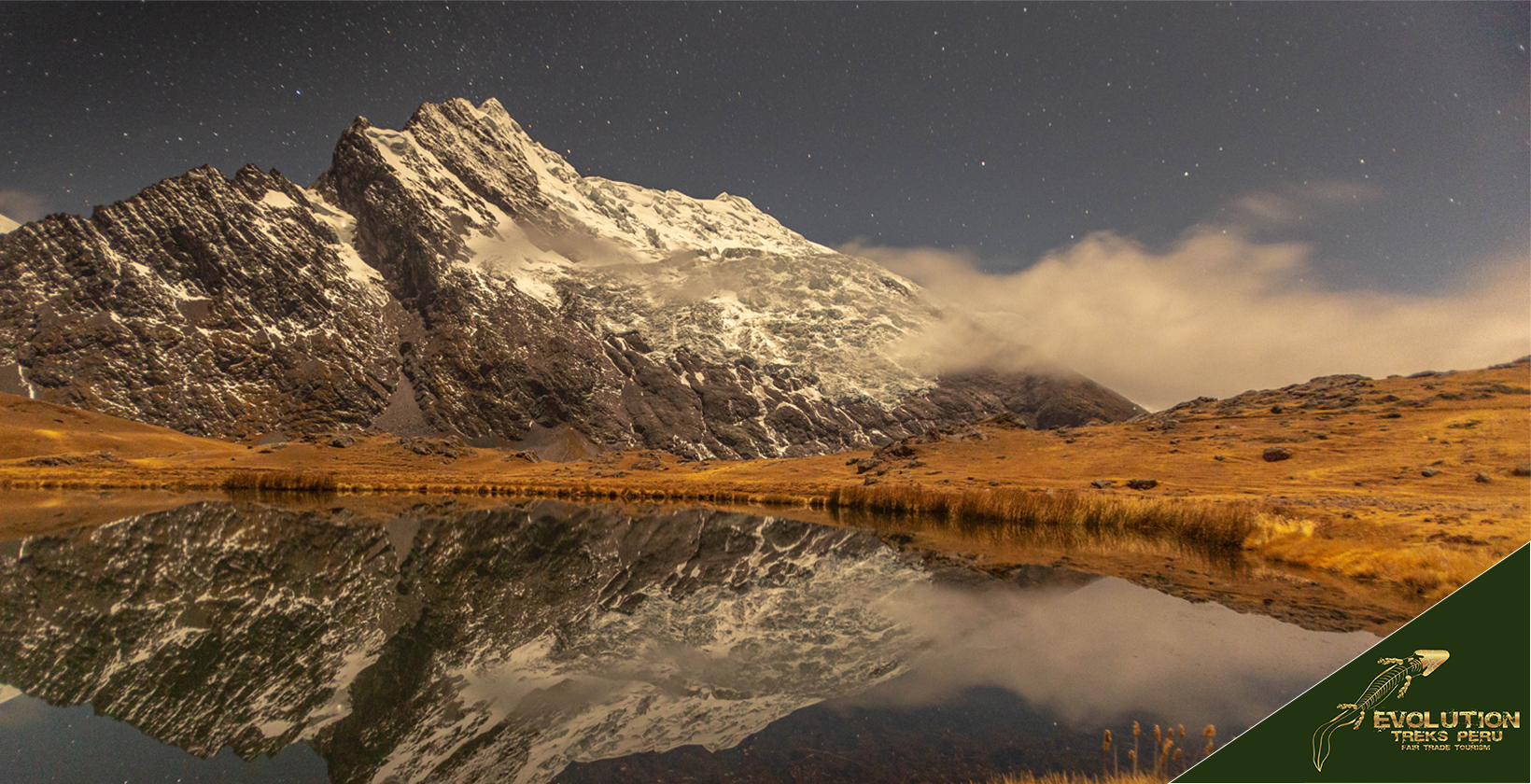
Where is Nevado Auzangate Located?
Nevado Auzangate is located 100 kilometers southeast of Cusco in the Ocongate District, Cusco Region. There are various mountains surrounding the Nevado Auzangate and one of them is the Rainbow Mountain, known as Vinicunca or Montaña de Siete Colores. Rainbow Mountain is situated in the Andes, Cusco Region.
Furthermore, the other closest mountain peaks in Nevado Auzangate are Callangate, Quimsachata, Humantay Mountain, Nevado Veronica, Salcantay, Huayna Picchu, Huayna Picchu, and Nevado Mismi. In addition, there are rivers near Nevado Ausangate, such as the Cusco River. The distance from Nevado Auzangate to the Cusco River is 83 kilometers. There are many creeks and rivers on the way to Nevado Auzangate. However, it is suggested to bring water-purifying tablets.
Nevado Auzangate has numerous must-visit lagoons, such as Blue Lagoon Cocha, Otorongo Lagoon, O´Quecocha Lagoon, Puca Cocha Lagoon, Q´omercocha Lagoon, Murococha Lagoon, and Alqacocha Lagoon. Moreover, aside from mountains, lagoons, and rivers, Nevado Auzangate has stone forests that make it a paradise in the world.
What are the coordinates of Nevado Auzangate?
The exact geographical coordinates of Nevado Auzangate are 13.7908° S, and 71.2325° W. The latitude of Nevado Auzangate is -13° 47′ 26.9988″, and the longitude is -71° 13′ 57″. Nevado Auzangate is at the highest point of Cusco Province in Peru.
What are the Tours for Nevado Auzangate?
There are various available tours in Nevado Auzangate for family, friends, or couples. Trekking Nevado Auzangate is challenging, therefore it is necessary to hike with a guide. However, hiking independently is not a problem in Nevado Auzangate, but it is only recommended for those experienced trekkers.
An Independent hike is cheaper than a guided hike. Despite that, a guided hike is less stressful and all the things needed are planned by the tour guides. To trek the Nevado Ausangate, it is necessary to be well-acclimatized. Most of the tour types in Nevado Ausangate are private. The tours are responsible for arranging everything, as well as guiding the hiker through the routes.
The age requirement for most of the tours available in Nevado Auzangate is 18 years old and 65 years old. Moreover, Ausangate Trek is 80 kilometers, including the trip to Rainbow Mountain and Red Valley. It is 55 kilometers if Rainbow Mountain is not included. Climbing Nevado Ausangate is usually done within 4 to 10 days, depending on the tour. However, the average duration of the Ausangate Trek is 4 to 5 days. The cost of trekking Nevado Ausangate depends on the days of tours and if it is guided or not. For non-guided tours, the cost is lesser if the hiker has camping gear.
The cost for the indicated camping sites ranges between $1.27 to $2.55 per tent or per head. There are hostels available in Nevado Ausangate such as Hostel In Pacchanta, which cost $3.82 per head, and hot springs Pacchanta cost $1.27. Gear rental is available, and the cost depends on what gear to rent.
Gear rental costs vary from $50 to $80. It is recommended to bring personal gear if planning to do several hikes in Peru or South America. The bus fare from Cusco to Tinqui is $3. The entrance fee for Tique Park is $3. For food and gas, try to budget $30 to $50. The entrance fee in Nevado Ausangate and Red Valley is $3 each.
On the other hand, hiking Nevado Ausangate with company costs ranges from $450 to $850 per head, depending on the number of trekking days. The package includes a guide, cook, horses, transport, food, tents, and mattresses. Moreover, travel insurance is a must for any multi-day trek. Most of the operators require the hiker to have sufficient travel insurance. In addition, the routes in Nevado Ausangate are only used for walking and motorbikes.
When is the best time to visit Nevado Auzangate?
The best time to visit Nevado Ausangate is between May and September because these are months when the season is dry. The weather during these months is the most pleasant because there is almost no rain. During dry months, the temperature in the daytime is typically mild, and the visibility is high. The nights are colder, therefore it is advisable to wear layers.
The chances of rain during April and October are higher, though it is warmer. Avoid visiting Nevado Ausangate during the colder season because of the snow at high elevations. The colder season is between June to August. While the rainy season in Nevado Ausangate is from November to March. During these months, the weather is warmer, but it rains a lot. Moreover, the cost of the summer tour and winter tour is still the same.
What are the Hiking Routes for Nevado Auzangate?
The best time to visit Nevado Ausangate is between May and September because these are months when the season is dry. The weather during these months is the most pleasant because there is almost no rain. During dry months, the temperature in the daytime is typically mild, and the visibility is high.
The nights are colder, therefore it is advisable to wear layers. The chances of rain during April and October are higher, though it is warmer. Avoid visiting Nevado Ausangate during the colder season because of the snow at high elevations. The colder season is between June to August. There are three main hiking routes for Nevado Auzangate, these include Ausangate Circuit, Machu Picchu, and Vinicunca Circuit.
Ausangate Circuit is a 70 kilometer trek around Nevado Ausangate. It takes 4 to 5 days to complete the trail. Through trekking Ausangate Circuit, witness the glaciers, hot springs, turquoise lake, and elevated routes. The trailhead of the Ausangate Circuit is Alqatari. However, most independent hiker starts from Tinqui.
The trail is difficult, but it is ideal for those with a modest fitness level. Furthermore, there is a route from Machu Picchu to Nevado Ausangate. Machu Picchu is a site of ancient Inca ruins that is located approximately 50 miles (80 km) northwest of Cuzco, Peru, in the Cordillera de Vilcabamba of the Andes Mountains. Passing from Machu Picchu is an alternative to going to Nevado Ausangate. Machu Picchu is an Inca citadel situated in the Eastern Cordillera of southern Peru.
It consists of 150 buildings, such as baths, houses, temples, and sanctuaries. The fastest way to get from Machu Picchu is by riding a train to Cusco, then to Nevado Ausangate. The travel duration is 5 hours and 47 minutes. In addition, the distance from Nevado Ausangate to Machu Picchu is 158 kilometers.
Lastly, the Vinicunca Circuit is a 4 to 5 days trek. The route starts from Tinqui and ends in Chillca village. Vinicunca is a 43-kilometer trail and is known as a difficult route. Vinicunca Circuit passes through the Ausangate range and then to Vinicunca mountain. It features high altitudes and cold temperatures.
While the rainy season in Nevado Ausangate is from November to March. During these months, the weather is warmer, but it rains a lot. Moreover, the cost of the summer tour and winter tour is still the same.
How many miles is the Nevado Auzangate trek?
Nevado Auzangate trek is a 41.1-mile or 66.1-kilometer loop trail. Nevado Auzangaten is known as the most difficult trail in Cusco. It takes an average of 20 hours and 47 minutes to finish. It is categorized as Grade C in difficulty level. The altitudes of Nevado Auzangate are between 14,800 to 16,400 feet (5 km).
Trekking Nevado Auzangate requires 6 to 7 hours per day to complete. The average trekking duration in Nevado Auzangate is 4 days to 10 days. The normal trails in Nevado Auzangate are somewhat technical. Hiking without the tour is possible, but it is recommended only for those skilled hikers.
Nevado Auzangate is considered one of the most crucial mountains in the Andes. To trek the Nevado Auzangate successfully, make sure to conduct proper acclimation and has good stamina.
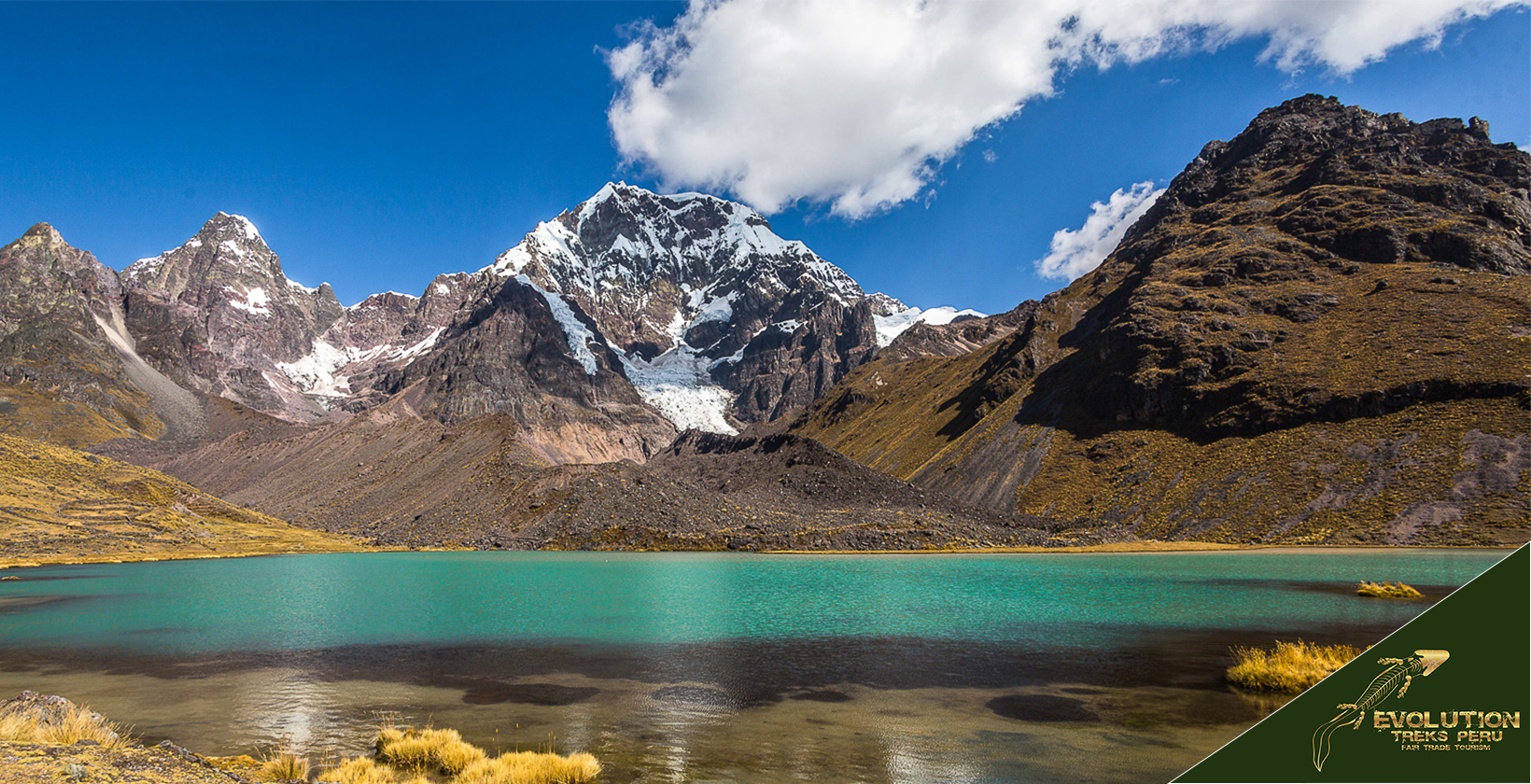
What are the Closest Destinations to Nevado Auzangate?
Listed below are the closest destinations to Nevado Auzangate.
- Cusco: Cusco is a city and capital of the Cusco Region. Cusco is usually the starting point of most trekking routes. There are various hotels and accommodations in Cusco for tourists and visitors to rest. It is advisable to rest well and not exercise before going to Nevado Auzangate. Aside from Nevado Auzangate, other attractions in Cusco are Sacsayhuaman, Humantay Lake, Inca Trail, Montaña de Siete Colores, and Plaza de Armas.
- Tinqui: Tinqui is a village in the Vilcanota Mountains. Tinqui is one of the starting points when going to Nevado Ausanagte. Ride a bus from the main station to Tinqui. The villagers live mainly from agriculture, alpaca breeding, and the muleteer profession for hikers.
- Chilca: Chilca is a Peruvian village. It is one of the starting points when going to Nevado Auzangate. Attractions such as Playa Yaya, Playa Chilca, Laguna La Milagrosa, Laguna La Mellicera, and Humedales Puerto Viejo are located in Chilca.
- Pacchanta: Pacchanta is a village in the Andean highlands. There are various thermal baths found in Pacchanta, where Andean camelids coexist with the high snow-topped mountains. Pacchanta has various hot springs where tourists and climbers are able to relax from a long day of walking and climbing.
How to Get from Cusco to Nevado Auzangate?
Listed below are the ways to get from Cusco to Nevado Auzangate.
- Taxi: Riding a taxi is the cheapest way to get from Cusco to Nevado Ausangate if the car is unavailable. The duration of travel is 5 hours and 32 minutes for 198.5 kilometers. The fare of riding a taxi ranges from $110 to $140. Ride a taxi in Cusco. Find a taxi service around Cusco.
- Car Rental: Renting and driving a car is another way to get from Cusco to Nevado Ausangate. The prices for renting a car in Cusco depend on the model of the car and the number of renting days. The average price of renting a car in Cusco is $94 per day.
- Bus: The best and fastest way to get from Cusco to Nevado Ausangate is by riding a bus. The estimated travel duration is 3 hours and 31 minutes. The bus fare from Cusco to Nevado Ausangate is $120.
Furthermore, there is a way to get from Arequipa to Nevado Ausangate. In Arequipa (AQP), fly going to Cusco (CUZ). It takes 56 minutes, and it cost $35 to $160. From Cusco (CUZ), go to Cusco Airport and ride a shuttle going to the train station, Wanchaq. The shuttle fare ranges from $15 to $40, and the travel duration is 12 minutes.
From the train station Wanchaq, walk going to Cusco then ride a bus going to Sacsayhuaman. The bus fare is $1, and it only takes 15 minutes. In Sacsayhuaman, transfer to Cusco Real Inka Car and ride a bus going to Montaña de colores. The travel duration is 3 hours and 20 minutes and the fare is $120. Lastly, Montaña de colores is near Nevado Ausangate. It only takes 11 minutes to get there.
What to know before going Nevado Auzangate?
Listed below are the things to know before going to the Nevado Ausangate.
- Purchase Tickets in Advance: Buying tickets on the day of the visit is not recommended. Booking the Nevado Ausangate tour is recommended to book ahead of time to secure the spot.
- Traveling Without A Guide is Highly Discouraged: Nevado Ausangate or Ausangate Trek is one of the most crucial and difficult treks in Cusco. Trekking without a guide is only recommended for those experienced or skilled hikers.
- Do Not Wear Shorts: Always protect the skin from mosquito bites in Nevado Ausangate by wearing long pants rather than shorts. The most effective method for avoiding these irritating red welts is to dress in long pants and sleeves whenever possible, even when the temperature is high. Wear proper gear and layers when hiking during winter.
- Bring These Important Things: Be sure to carry some sunblock, insect repellent, and shampoo, at the very least. It is a good idea to wear shoes that are comfortable for walking, a raincoat, and multiple layers of clothes since mornings are very cold to very hot in the middle of the day. In addition, carrying a backpack that is either small or regular in size is permitted. However, carrying an excessively large backpack is not permitted.
- Bring Water Bottles: Refillable water bottles are permitted. It is important to stay hydrated during the hike in Nevado Ausangate.
- Have travel insurance: Before going to hike Ausangate, it is advisable to have sufficient travel insurance. Travel insurance is required in some tour companies if having extreme travel.
When is Nevado Auzangate Open?
Nevado Ausangate is open every Monday to Saturday, from 9 am to 7 pm. Nevado Ausangate is open during holidays. It doesn’t change even on holidays. There are trekking schedules for summer tours and winter tours, even during holidays.
How is the Nevado Auzangate Itinerary?
Nevado Ausangate has various options on how long the tourist wants to tour the site. The average number of days to tour or trek Nevado Ausangate is 4 days to 10 days. The starting point is usually in Cusco. However, Nevado Ausangate is accessible if from Arequipa. Tourists are able to choose if they are going to travel to Nevado Ausangate with or without a guide.
However, it is more organized if traveling and touring with a guide. However, it is only recommended for those experts in hiking. Book a tour in Nevado Ausangate in advance to secure the spot. The most common number of days to trek Ausangate is a 6-day trek. On day 1, ride a bus going to Cusco and depart to Tinqui. It takes 3 hours to arrive at Tinqui. From Tinqui, take a taxi going to the trailhead of the Ausangate trek. The official trail starts at the village of Upis. In Upis, there are several hot springs to enjoy.
After staying for a while in the hot baths of Upis, continue to travel to Abra Arapa Pass. There are lakes along the site, and it is a great place to camp. On day 2, go to Hatun Pucacocha, go to Laguna Ausangatecocha. It takes 3 to 5 hours. Enjoy the lake and rest to get ready for the next day. On day 3, from the campsite, go to Rainbow Mountain or known as Montaña de Siete Colores, and Red Valley. On day 4, watch the sunrise from Rainbow Mountain, then go through Warmisaya Pass towards the shelter close to Laguna Ausangatecocha.
Don’t forget to explore Red Lake. On day 5, from Machuraccay Lodge, head towards the village of Pampacancha, then Abra Khampa. In Abra Khampa, continue to walk, heading to the final campsites. On the final day, from the Lake campsite, go to Pacchanta and enjoy the hot springs. In addition, there are various restaurants, and ask around and ride a car going to Tinqui. For those who wish to stay, one last hike to the lakes is possible. There are hotels and guesthouses around.
How much does it cost to visit Nevado Auzangate?
The cost to visit Nevado Auzangate depends on whether to book a tour company or not. Touring Nevado Auzangate without a guide is cheaper. However, touring with a guide is much better and more organized. To visit Nevado Auzangate without a guide, try to budget $120 per head. The bus fare from Cusco to Tinqui is $3. The entrance fee for Tique Park is $3. For food and gas, try to budget $30 to $50.
The cost for the camping sites starts between $1.27 to $2.55 per tent or head. There are hostels available in Nevado Ausangate, and it cost $3.82 per head and hot springs, Pacchanta, cost $1.27. Gear rental is obtainable, and the cost depends on what gear to rent. Gear rental costs vary from $50 to $80.
It is suggested to bring own gear if planning to do several hikes in Peru or South America. The entrance fee in Nevado Ausangate and Red Valley is $3 each. On the other hand, the cost to visit Nevado Auzanagte with a tour starts from $450 to $850 per head and varies on the number of touring days. The package involves a guide, cook, horses, transport, food, tents, and mattresses.
What is the best vehicle for visiting Nevado Auzangate?
The best vehicle for visiting Nevado Auzangate is by riding a bus. The bus is the best and fastest way to get to Nevado Auzangate. For example, from Cusco to Nevado Auzangate, the travel duration is approximately 3 hours and the fare is around $120. Another way to get to Nevado Ausangate is by riding a taxi. Taxi is the cheapest way to get to Nevado Auzangate.
For example, from Cusco, the duration of travel is approximately 5 hours and the fare starts from $110. However, the safest and most flexible vehicle to use to visit Nevado Auzangate is the transport provided by a tour company. Their package includes transport, and it is more organized and less hassle. Moreover, Nevado Auzangate is able to see even without flying, unless coming from Arequipa or Lima.
How many hours should a person spend in Nevado Auzangate?
Nevado Auzangate has no time limit. The length of touring Nevado Auzangate depends on the time the visitor has, but if traveling with a tour, there are planned times and lengths of visiting every viewpoint. Touring and trekking at Nevado Auzangate have several options. The tourist is able to visit and tour Nevado Auzangate for many days. Most of the tours last for 4 days to 10 days, but the most common is 6 days. The routes of hiking Nevado Auzangate depend on the length of the tour.

Which Civilization used Nevado Auzangate for what?
Inca’s civilization creates the greatest empire in entire America. In Nevado Auzangate, there are countless villages to discover. The villages in Nevado Auzangate give insights into the traditional Peruvian culture where Inca Empire make their living through herding and farming, until the present time.
The region is populated by llama and alpaca herding communities. The elevated mountain trails are used by herders to trade with agricultural communities at lower elevations. Incas are known as religious. There is a festival in Nevado Auzangate called Quyllur Rit’i, which is a Quencha word that means “star snow”.
It is usually taking place in late May or early June. Quyllur Rit’i festival captivates thousands of Quencha pilgrims and is celebrated about 20 kilometers north of the Nevado Auzangate at the mountain of Qullqipunku. The pilgrimage was added to the Representative List of Heritage Intangible Culture of Humanity. During the festival, people make offerings and in return receive a blessing from the mountain.
How is the Geography of Nevado Auzangate?
Nevado Auzangate is situated in the Vilcanota mountain range in the Andes, with a height of 6,398 meters in elevation and around 62 miles southeast of Cusco. There are diverse mountains around the Nevado Auzangate, including Rainbow Mountain, known as Vinicunca or Montaña de Siete Colores. Rainbow Mountain is in the Andes, Cusco Region.
Additionally, the other closest mountain peaks in Nevado Auzangate are Callangate, Quimsachata, Nevado Veronica, Salcantay, Huayna Picchu, Huayna Picchu, Humantay Mountain, and Nevado Mismi. In addition, the Cusco River is one of the close rivers to Nevado Auzanagte. The length from Nevado Auzangate to Cusco River is 83 kilometers. There are various creeks and rivers on the way to Nevado Auzangate. Hence, it is suggested to bring water purifying tablets.
Nevado Auzangate has different must-visit lagoons, such as Blue Lagoon Cocha, Otorongo Lagoon, O´Quecocha Lagoon, Puca Cocha Lagoon, Q´omercocha Lagoon, Murococha Lagoon, and Alqacocha Lagoon. Additionally, aside from mountains, lagoons, and rivers, Nevado Auzangate has stone forests that make it bliss in the world. On the other hand, the geological formation of Nevado Auzangate is about 13 meters in length and 4.5 kilometers in width.
The Andes were made as a result of tectonic activity where the earth is elevated as one plate subducts under another plate. The soils in the Andes are composed of inceptisols, ultisols, mollisols, and exposed rock. In addition, there are diverse flora and fauna in Nevado Ausangate. Furthermore, the main climate in Nevado Ausangate is cold, with 5 degrees Celsius at nighttime and 20 degrees Celsius at daytime. Some parts of the day have cold winds, rains, and snowfalls.
What is the Geological Profile of Nevado Auzangate?
Nevado Auzangate is one of the outstanding geologic characteristics in the world. Nevado Auzangate has four main geological characteristics, such as the striped color of Nevado Auzangate are turquoise, lavender, maroon, and gold; the Andean elevated made by Granits; the hanging glaciers and glacial erosional valleys; the Permian formation with colors red, ochre, and turquoise; and the Cretaceous, limestone forests.
What are the findings in Nevado Auzangate?
Along with traveling to Nevado Auzangate, there are numerous relics of the Inca civilization. The ancient fortresses and the villages built in age-old tradition and the presence of the Andes Mountains make for a magical experience to feel how the Incas would. There are numerous Andean villages and towns around Nevado Ausangate, such as Pacchanta, Tinqui, Urcos, Cattca, and Ocangate. It is believed that the Incas were talented, which enabled them to build an empire in the mountains and create a sustainable source of food for the civilization.
What is the nearest city to Nevado Auzangate?
Ancient cities in Nevado Auzangate and near cities are Cusco, Arequipa, and Lima. Nevado Auzangate is situated in the city of Cusco. Cusco is the normal route going to Nevado Ausangate. Arequipa is 293 kilometers from Nevado Ausangate. It is a city and capital province of Peru. Lastly, Lima is the capital and the largest city in Peru. It was founded by the Spanish conquistador, Francisco Pizarro, on January 1535. Historic houses can be found here and have been announced as one of the World Heritage sites because of its architecture, and it is rich in buildings, style balconies, temples, colonial mansions, and churches. The distance from Lima to Nevado Ausangate is 658 kilometers.
What are the nearest attractions to Nevado Auzangate?
Listed below are the nearest attractions to Nevado Auzangate.
- Machu Picchu: Going to Machu Picchu is an option after trekking or touring Nevado Ausangate. Machu Picchu is an Inca citadel situated in the Eastern Cordillera of southern Peru. It consists of 150 buildings including baths, houses, temples, and sanctuaries.
- Aguas Calientes: Aguas Calientes is close to Machu Picchu. Traveling to Aguas Calientes is possible after visiting Nevado Ausangate. Aguas Calientes is a small town at the base of the valley next to Machu Picchu. Aguas Calientes has hot baths, Mandor, and Manuel Chavez Ballon Site Museum.
- Mt. Putucusi: Mt. Putucusi is situated northeast of Machu Picchu. After visiting Nevado Ausangate, it is great to tour Mt. Putucusi. Mt. Putucusi is one of the three peaks around Machu Picchu.
1. Machu Picchu
Machu Picchu, often written Machupijchu, is a site of ancient Inca ruins that is located approximately 50 miles (80 km) northwest of Cuzco, Peru, in the Cordillera de Vilcabamba of the Andes Mountains. Passing to Machu Picchu is an alternative after trekking or touring Nevado Ausangate. Machu Picchu is an Inca citadel situated in the Eastern Cordillera of southern Peru.
It consists of 150 buildings, such as baths, houses, temples, and sanctuaries. Machu Picchu is accessible if traveling through the Nevado Ausangate. The fastest way to get from Nevado Ausangate is by riding a train to Cusco and then to Machu Picchu. The travel duration is 5 hours and 47 minutes. The train from Cusco to Machu Picchu cost around $95. In addition, the distance from Nevado Ausangate to Machu Picchu is 158 kilometers.
2. Aguas Calientes
Aguas Calientes means “hot waters’ in Spanish, and is a small town at the bottom of the valley next to Machu Picchu. It is located deep in the Urubamba Valley that is accessible to tourists by train. A village built at the base of the mountain called Aguas Calientes became a cultural hub with more than a hundred hotels, tourist stores, and restaurants.
Traveling to Aguas Calientes is possible after visiting Nevado Ausangate. Aguas Calientes has hot baths, Mandor, and Manuel Chavez Ballon Site Museum. Aguas calientes is 157 kilometers away from Nevado Ausangate. To go to Aguas Calientes from Nevado Ausangate, go to Cusco and get a train heading to Aguas Calientes.
3. Mt. Putucusi
Mt. Putucusi is the smallest of the three mountains, located on the opposite side of the Urubamba River to Machu Picchu in the Cusco region of Peru. The other mountains are Machu Picchu mountain and Huayna Picchu. It is located just northeast of Machu Picchu, and most of the tourists hike the site, but it is accessible by train or bus. After visiting Nevado Ausangate, it is great to tour Mt. Putucusi. It is 158 kilometers from Nevado Ausangate to Mt. Putucusi.
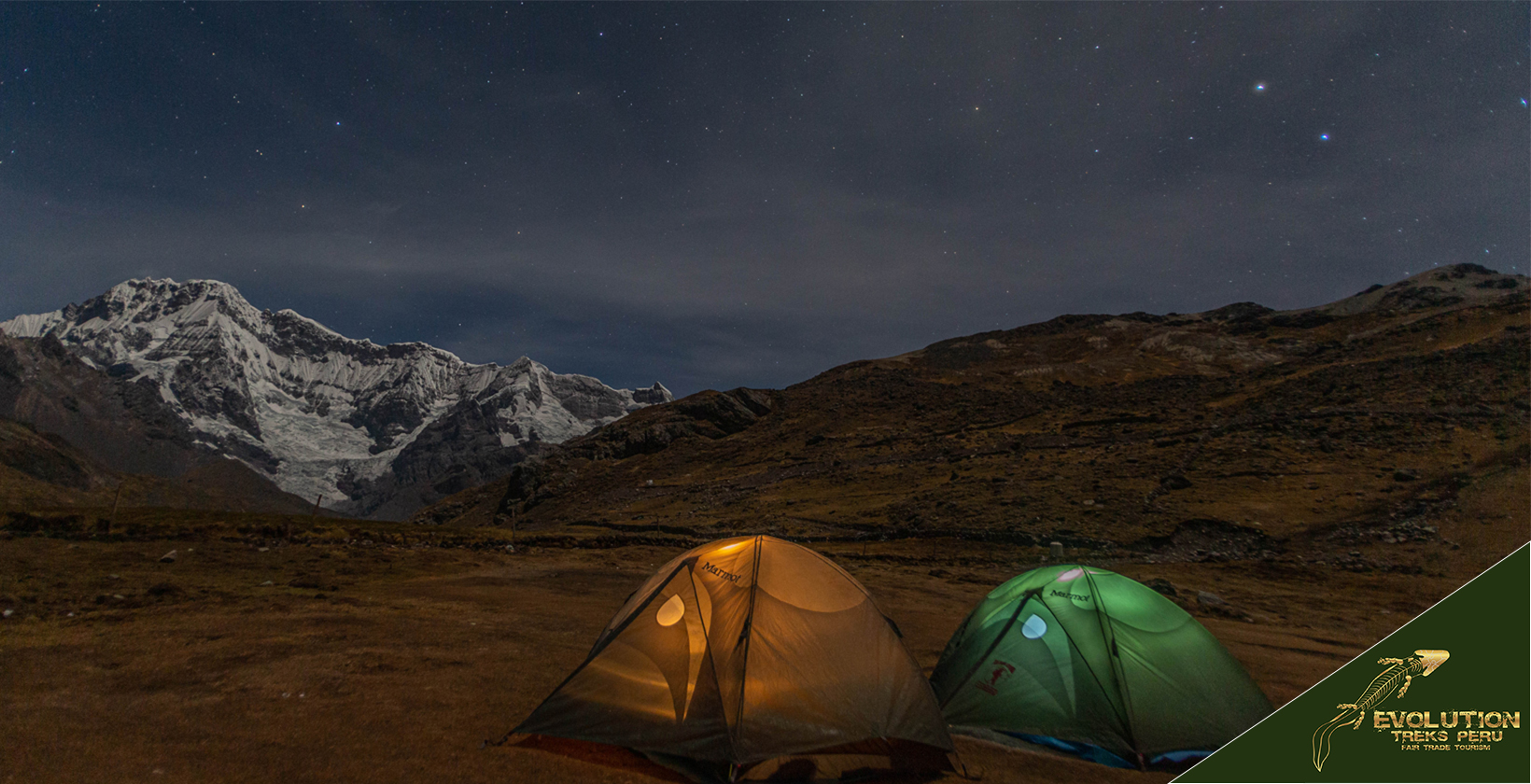
What are the books about Nevado Auzangate?
There was a book written entitled, The Inca Trail, Cusco & Machu Picchu: Includes Santa Teresa Trek, Choquequirao Trek, Lares Trail, Ausangate Circuit & Lima City Guide by Alexander Stewart and Henry Stedman. This book is a compact guide that contains trekking choices, and several trekking days. There are 60 precise maps presenting walking times, campsites, and attractions.
Who are the scientists who worked on Nevado Auzangate?
There are different expeditions and studies conducted in Nevado Ausangate. One of the examinations led in Nevado Ausangate is from Dr. Laura Evenstar. Dr. Laura Evenstar is a geomorphologist, sedimentologist, and professor at the University of Brighton, and specializes in superficial ore deposits from tectonic active arid regions around the world. Dr. Laura Evenstar led an investigation and applied a new method based on cosmic rays that make an unusual form of helium in minerals at the Earth’s surface. The abundance of helium relies on the peak of the surface and thereby, it is able to understand the elevation history of a rock surface.
Moreover, some professionals examine the three glaciers of Auzangate, descending south from the Nevado Auzangate group of summits in the Cordillera Vilcanota. The drawback of glaciers in the Cordillera Vilcanota became swift since 1975. In addition, Bijeesh Kozhikkodan Veettil, a Vieresearcher and professor at Dan Tan University, studies the glacier retreat in the Northern region of the Vilcanota mountain range in Peru. As per Veettil et al., 80% of the frozen area beneath 15000 meters was gone from 1975 to 2015 and the total glacier area had dropped by 48%.
Moreover, as per Henshaw and Bookhagen, from 1988 to 2010, they noticed that the frozen area of Cordillera Vilcanota decreased by 1% every year. Furthermore, the first expedition in Nevado Ausangate happened in 1950, led by Italian Piero Ghiglione, a veteran 71-year-old climber. Many attempted to reach the Ausangate Summit. After three years, a German expedition happened and achieved the goal.
Which district is Nevado Auzangate in?
Nevado Auzangate is in the district of Ocongate. Ocongate District is one of the twelve districts in the province of Peru. Nevado Ausangate is an attraction in the district of Ocongate. The Vilcanota mountain range covers the Ocongate district. Ocongate is 367.82-meter square. Other attractions in Ocongate are Laguna Singrenacocha and Iglesia de San Pablo de Ocongate.
Is Humantay Mountain close to the Nevado Auzangate?
Yes, Humantay Mountian is close to the Nevado Auzangate. Humantay Mountain is a 17,956 feet (5.47 kilometers) mountain situated in the Vilcabamba range in the Andes, Cusco Region. The distance from Humantay Lake to Nevado Ausangate is 156 kilometers.
Does Humantay Mountain affect the History of Nevado Auzangate?
Yes, Humantay mountain affects the history of Nevado Auzangate. Humantay mountain is situated in the Cusco region, the same as Nevado Ausangate. When Humantay mountain melted, it forms a lake of emerald waters. Humantay Lake is a lake that formed due to the melting of a Humantay mountain.
Humantay lake is a sacred lake since the times of the Incas and creates an Andean legend that passed down through generations. According to the legends, Salkantay and Ausangate are brothers that decided to travel in a different direction. Ausangate to the south and Salkantay to the north. Salkantay met the goddess Veronica.
They did not end in a happy ending, because Salkantay and Ausangate had to return to Cusco to prevent the drought that was happening. The product of it was disciplined by the gods and became snowy. Salkantay became sad and cried, which flowed and gave birth to the beautiful lake named Humantay lake.
How did Nevado Auzangate Lived in the Past?
The daily life of the people who lived in Nevado Ausangate was described by strenuous family agricultural work, often imposed state or service in the military for men, and infrequent lighter instances of celebrations to commemorate important events in the society and serve to highlight the crop production calendar. Nevado Ausangate was occupied by prehistoric civilizations that pioneered the Incas. Incas in the past, until now, are known as herders and farmers. Nevado Ausangate is resided by alpaca and llama herding communities. To maximize the advantage of wool, they create clothes.
How was Agriculture in Nevado Auzangate?
Nevado is rich in flora and fauna. Agriculture is concentrated and all-out on the production of a wide sort of tubers, including goose and potatoes. Nevado Auzangate is used by shepherds to trade with agricultural communities at lower elevations. Crops that grow around Nevado Ausangate are oxalis, beans, and quinoa. In addition, various plants grow in Nevado Ausangate, such as high-altitude spine cacti and alpine flowers.
How was Mining in Nevado Auzangate?
The Incas had a significant wealth of gold and silver. The gold and silver used by the Inca came exclusively from surface sources, either in the form of gemstones or as a result of panning river beds.
How was the economy of Nevado Auzangate?
The Inca had a bountiful economy during its peak. Their primary resource was agriculture, which allowed them to trade with other places. It also has plenty of lands, workers, mines, and freshwater everywhere. They were able to maintain a thriving economy by carefully utilizing those resources.
How was Daily Life in Nevado Auzangate?
Strong family ties and agricultural production characterized day-to-day life in the Inca Empire. Also, men are required for military service. The daily life of the Incas will depend on what type of labor they are doing. During the childhood of each Inca, they were trained by their parents to work at a young age. Until the child grew, they continued to work to help expand their empire. However, the women in Inca were only given work inside the house to do household chores and take care of their children.
What was the Religious Beliefs in Nevado Auzangate?
The Inca religion permeated nearly every facet of daily life. Sacred buildings, also known as temples, which were dedicated to their deities, served as one of the numerous focal points for their religious activities. The Inca believed that the spirits of their creator lived in the elements of nature, such as the wind, rivers, trees, the sun, the moon, rocks, mountains, and the earth.
As a result of this belief, the Inca constructed religious sites and other ritual areas to honor such spirits, including numerous structures at Nevado Ausangate. In addition, throughout the year, they participated in several religious celebrations that featured performances of music and dance, as well as the consumption of food and the offering of human sacrifices. The Incas practiced mummification of their deceased because they thought that their ancestors retained the ability to watch over their descendants even after death. In addition, every year Quyllur Rit’i festival is celebrated.
It is normally celebrated in late May or early June. Quyllur Rit’i festival captivates thousands of Quencha pilgrims and is celebrated about 20 kilometers north of the Nevado Auzangate at the mountain of Qullqipunku. The crusade was added to the Representative List of Heritage Intangible Culture of Humanity. During the celebration, people make gifts and in return receive a blessing from the mountain.
How is the Past of Nevado Auzangate presented to the visitors?
The Nevado Ausangate was still the same in the past. Tourists experienced and saw what a 7-day tour can offer. The only changes they’ve made were no-fly zone is not allowed. Track paths are still challenging, just as today. Archaeological sites and architecture are still in the same places. Its panoramic views are still breathtaking and mesmerizing. Around Nevado Ausangate, there is cultural diversity, and a variety of fauna common in the high areas of the Andes, including vicuña, vizcacha, and Andean foxes. Throughout the travel, discover the villages, glaciers, and turquoise lakes, as well as Rainbow Mountain.
How is the Preservation of Nevado Auzangate?
Nevado Ausangate has a huge snow-topped peak. Back in 2019, the Ausangate Regional Conservation Areas or RCA made a move to preserve the glacial ecosystems and the Andean grasslands, as it is specified by the National Service of Natural Areas Protected by the State (Sernanp). RCA protects the 164,360 acres of Andean ecosystems in Cusco since Nevado Ausangate and most of the areas in the Vilacanota range experiences a raising amount of pressure in the past years because of increasing temperature and the mining activities nearby.
The conservation and preservation of Nevado Ausangate led by the Regional Government of Cusco are possible with the help of the communities, and other responsible government units, such as the UN Development Program (UNDP) and Andes Amazon Fund (AAF).
Is there a modern town of Nevado Auzangate?
Yes, there is a modern town in the Nevado Ausangate. Cusco is known for being the primary city of Peru, but what travelers did not know is that the city of Cusco was earlier the capital of the Inca Empire. The city has a lovely colonial architecture that has been preserved to maintain its beauty and wonder by the locals and governments.
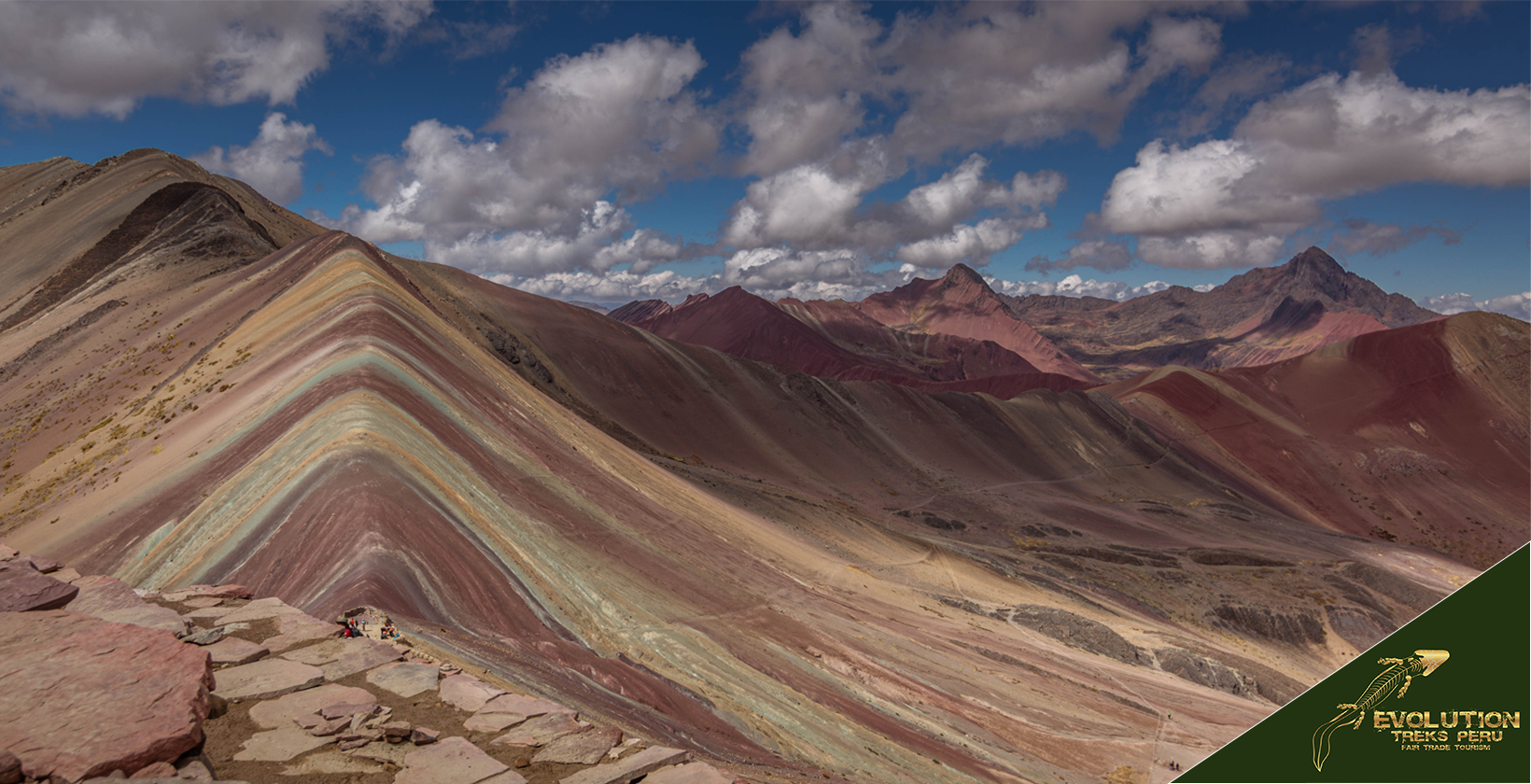
How is the Map of Nevado Auzangate Layout?

How was Transportation to the Nevado Auzangate?
Peru has various kinds of transportation systems to reach the Nevado Ausangate. Tourists have options, whether to take buses, taxis, trains, or cars. However, the fastest transportation to Nevado Ausangate is by bus. The road system of the Nevado Ausangate is known in history as a royal road. The Inca Empire used the road primarily for its transportation of goods, military, and communication. These roads connecting different locations were heavily used and were one of the reasons the Inca Empire thrived at its height.
Does Nevado Auzangate have a No-fly Zone?
Yes, Nevado Ausangate has a no-fly zone after Peru’s government banned it. The government decides to protect and preserve the wildlife within the area. The government decided to have a no-fly zone on the Nevado Ausangate ever since their environmentalists announced that there are plenty of wildlife animals and plants that are affected by low-flying helicopter tours. Helicopters are not allowed to fly within a radius of the protected zone of archaeological sites. The government of Peru banned helicopter tours in 2018.
Is Nevado Auzangate in UNESCO World Heritage Sites?
No, the Nevado Ausangate is not a UNESCO World Heritage Site. However, Cusco City, where Nevado Ausangate is situated, is included in the world heritage site. Cusco became part of the UNESCO World Heritage Site in 1983. Cusco is the former capital city of the Inca Empire. Every year, around 2 million tourists visit Cusco.
What is the contribution of Nevado Auzangate to the Tourism in Peru?
The Nevado Ausangate plays a big role in tourism in Peru as one of the tourist destinations. Though there is various attraction in Peru, considering how the Nevado Ausangate contains most of the ancient cultures and traditions that remind the life of the Incas in the past. It is a must to take time and appreciate the history of how the Inca civilization lived.
The Nevado Ausangate is a special part of the Inca civilization and plays an important role for all its people. The villages in the Nevado Ausangate benefit from the visiting tourists that provide their livelihood. The government as well as the people benefit from the ancient archaeological sites that have been architectural masterpieces that tell stories of the past of how the early people lived their lives.
Is Nevado Auzangate under danger?
Yes, Nevado Auzangate is under danger. Climate change is taking place all over the world. Tropical glaciers are important in moderating seasonal variations in the flows of the mountain rivers and securing a consistent supply of fresh water to the communities downstream for drinking, agriculture, and others.
Climate change is diminishing glaciers globally and increasingly putting water security in danger in regions that rely on glaciers. Though the quick shrinking of glaciers contributes to the landscape changes at a unique rate, it is not harmless all the time. For example, recently uncovered slopes and natural dams are frequently changeable and vulnerable to failure, likely leading to avalanches, landslides, or glacier lake outburst floods.
Is Nevado Auzangate floated in the past?
No, Nevado Ausangate has not floated in the past. However, the people who live there, like the Incas, remark that it makes them sense as though they are floating.
How many Artifacts do exist in Nevado Auzangate?
There are artifacts uncovered during the years 1912 to 1915. It includes some ceramic vessels, gold jewelry, and silver statues. 46,000 artifacts have been recovered, including a mummy or human remains that are now being displayed at Yale’s Peabody Museum.
Some Sample Artifacts from Nevado Auzangate?
Listed below are some examples of artifacts from the Nevado Azungate.
- El Aribalo: El Aribalo is a ceramic jar used for transporting, preserving, and serving beer that is brewed from corn. The aribalo pottery was put to use not only in day-to-day life, but also in the service of the dead as grave goods.
- El Quero: El Quero was a type of glass that originated in the Inca culture. It was used to consume liquids, such as the customary chicha de jora drink. El Quero was a piece of earthenware. Both the people of the Tiahuanaco civilization and the Incas employed the El Quero as a ceremonial container during important religious events. These celebrations took place at sacred sites.
- Bismuth (Ceremonial Knife): The ceremonial knife made of bismuth was the earliest Inca artifact discovered in Machu Picchu.
- White Kaolin Plate: The White Kaolin Plate was discovered at an old burial site that contained the remains of three adult women.
- Inca Textiles: Inca textiles were created out of cotton, particularly along the coast and in the eastern lowlands, or wool from llamas, alpacas, and vicunas, which was more popular in the highlands. Cotton was more common on the coast and in the eastern lowlands. Only the Inca ruler was permitted to keep vicuna herds, and goods that were created with the wool of the super-soft vicuna were limited.
What are the movies about Nevado Auzangate?
There are no movies about Nevado Auzangate. However, there is a documentary, entitled, Ausangate by Andrea Heckman in 2006. The 61-minute documentary shows the lives of the people who reside around Ausangate. The basis of the documentary was that anthropological research started back 20 years and shows how weavers make textiles encoded with symbolic images that support traditional beliefs during rituals and in daily life. The documentary consists of women restoring the weaving techniques, the first hair-cutting rites of passage, and the yearly Qoyllur Rit’l.
Who are the famous people visited Nevado Auzangate?
Listed below are some famous people who visited Salkantay.
- Leonardo DiCaprio (2003): Leonardo DiCaprio is an American actor and film producer. Known for his work as a leading man in biopics and period films. He is the recipient of numerous accolades, including an Academy Award, a British Academy Film Award, and three Golden Globe Awards.
- Cameron Diaz (2007): Cameron Michelle Diaz is an American actress. The recipient of multiple accolades, including nominations for four Golden Globe Awards and BAFTA Award. Cameron Diaz was named the highest-paid Hollywood actress over 40 in 2013.
- Richard Gere (2010): Richard Tiffany Gere is one of the most popular American actors and producers. Besides being an actor, he is also an activist.
- Jim Carrey (2011): James Eugene Carrey is a Canadian-American actor and comedian. Known for his energetic slapstick performances. Jim Carrey first gained recognition in 1990, after landing a recurring role in the American sketch comedy television series In Living Color.
- Matthew McConaughey (2012): Matthew David McConaughey is an American actor. He had his breakout role with a supporting performance in the coming-of-age comedy Dazed and Confused. After several supporting roles, his first success as a leading man came in the legal drama; A Time to Kill.
- Bill Gates: William Henry Gates III is an American business magnate, software developer, investor, author, and philanthropist. He is a co-founder of Microsoft, along with his late childhood friend Paul Allen.
Where in Nevado Ausangate is the best place to stay?
Listed below is the top selection list of the best place to stay in Nevado Ausangate.
- Hotel Torre Dorada: Hotel Torre Dorada is situated in Residencial Huancaro in Cusco and 10 minutes away from Main Plaza. Hotel Torre Dorada is 0.2 miles (0.32 kilometers) away from Nevado Ausangate. The hotel offers free breakfast, free airport transport, free Wi-Fi, massage, baggage storage, currency exchange, laundry service, dry cleaning, ironing service, entertainment for kids, and many more. Hotel Torre Dorada is the Best Place to Stay in Nevado Ausangate, as it received a total of 5-star ratings in terms of location, cleanliness, service, and value. The cost of staying in Hotel Torre Dorada is $56.46 per night.
- Sonesta Hotel Cusco: Sonesta Hotel Cusco is an overlooking hotel situated in Cusco. Sonesta Hotel Cusco is 0.5 miles (0.8 kilometers) from Nevado Ausangate. The hotel offers free breakfast, free airport transport, free Wi-Fi, concierge, baggage storage, currency exchange, laundry service, dry cleaning, ironing service, entertainment for kids, and many more. Sonesta Hotel Cusco has received a total of 4.5-star ratings in terms of location, cleanliness, service, and value. The cost of staying in Sonesta Hotel Cusco is $113.53.
- Hotel Jose Antonio Cusco: Hotel Jose Antonio Cusco is situated a few blocks from the main square in Cusco and a 10-minute walk from Plaza de Armas. Hotel Jose Antonio Cusco is 0.4 miles (0.64 kilometers) from Nevado Ausangate. The hotel offers free breakfast, free airport transport, free Wi-Fi, a bar, baggage storage, a breakfast buffet, currency exchange, laundry service, dry cleaning, ironing service, entertainment for kids, and many more. Hotel Jose Antonio Cusco have received a total of 4-star rating in terms of location, cleanliness, service, and value. The cost of staying in Hotel Jose Antonio Cusco is $88.89.
Where in Nevado Ausangate is the best place to eat?
Listed below is the top selection list of the best place to eat in Nevado Ausangate.
- Chull’s Craft Beer Restaurant: Chull’s Craft Beer Restaurant is situated in Calle Zetas in Cusco. Chull’s Craft Beer Restaurant is 0.3 miles (0.48 kilometers) from Plaza de Armas and 0.8 from Nevado Ausangate. It is one of the Best Place to Eat in Nevado Ausangate as it is top 10 among the 979 restaurants in Cusco. Chull’s Craft Beer Restaurant has received a total of 5-star ratings in terms of food, service, and value. They have Peruvian, Healthy, Latin, Spanish, Contemporary, and Fusion cuisines. Meals for lunch, dinner, brunch and late nights are available in Chull’s Craft Beer Restaurant. Chull’s Craft Beer Restaurant offers takeout, reservations, outdoor seating, a full bar, and free Wi-Fi, and accepts card or digital payments. The price of the food ranges from $7 to $15.
- Alma Bar Restaurante: Alma Restaurante is sited at Plazalote Limacpampa Chico, Cusco. Alma Restaurante is 0.3 miles (0.48 kilometers) from Plaza de Armas and 0.8 from Nevado Ausangate. It is top 15 out of 980 restaurants in Cusco. Alma Restaurante has received a total of 5-star ratings in terms of food, service, and value. They have South American, and Peruvian, vegetarian-friendly, vegetarian options, and local cuisines. Meals for breakfast, dinner, and brunch are available in Alma Restaurante. Alma Restaurante offers takeout, reservations, and buffet seating, and accepts cards, highchairs, and wheelchairs available. The price of the food ranges from $10 to $40.
- Mr. Ceviche – Barra Cevichera: Mr. Ceviche – Barra Cevichera is located at Avenida Tullamayo, Cusco. Alma Restaurante is 0.6 miles (0.97 km) from Plaza de Armas and 0.5 from Nevado Ausangate. It is top 24 out of 980 restaurants in Cusco. Mr. Ceviche – Barra Cevichera has received a total of 5-star ratings in terms of food, service, and value. They have Seafood and South American, Peruvian, Latin, and Spanish cuisines. Meals for lunch and dinner are available in Mr. Ceviche – Barra Ceviche. Mr. Ceviche – Barra Cevichera offers reservation and table service available. The price of the food ranges from $5 to $10.
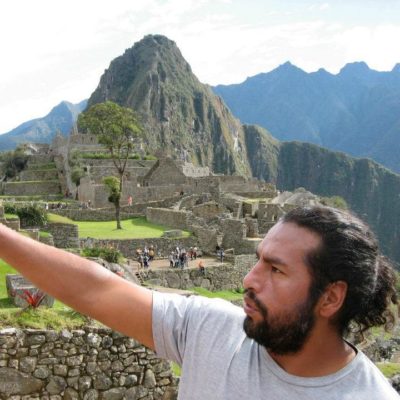
Miguel is a professional tour guide from Cusco, Peru, with almost 20 years of experience leading tours and a deep knowledge of Peru’s cultural and ecological diversity. He is also an advocate of ecotourism and cultural sensitivity and has lectured on these topics in the US and Europe. He co-founded Evolution Treks Peru, a worker-owned travel company based in Cusco.
